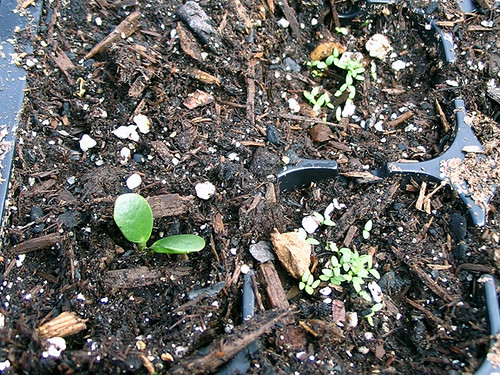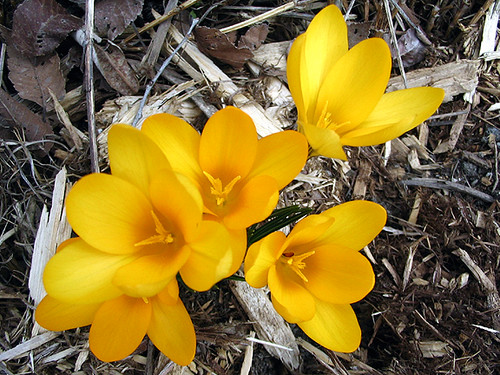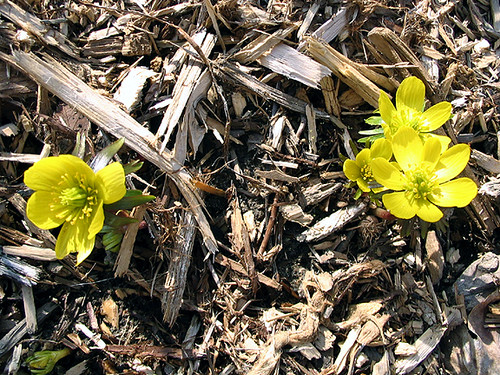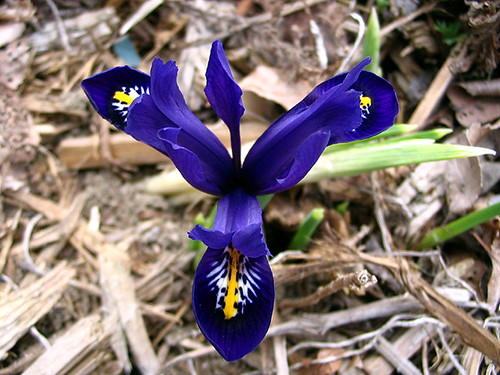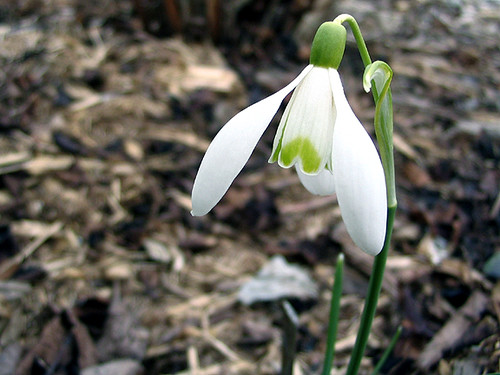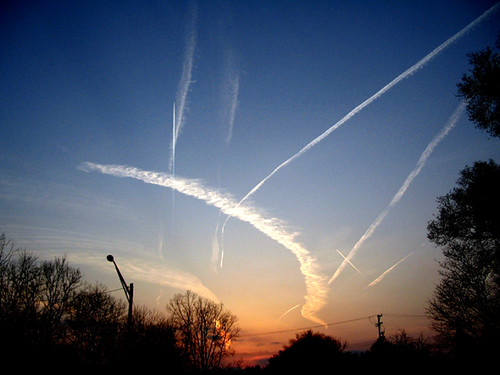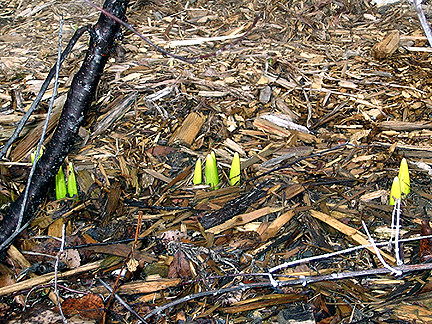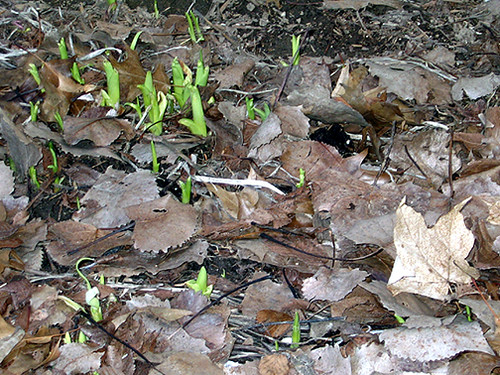
Somehow, I got it into my head that I would visit each of Ann Arbor's parks this year. Even though I've lived in Ann Arbor for well over 20-mumble years, and I'm pretty well acquainted with all its neighborhoods, I certainly have only visited a minority of its parks. I thought it would be a nice way to get outside, get some exercise, and enjoy some plants. This is no minor undertaking as there are about 160 parks in Ann Arbor. Undaunted, several of my friends thought it would be fun to accompany me. Peter has joined me for most of the 52 sites I've visited so far, in three different outings, and Aunita and Carole will accompany me later in the season when we hit more botanically-interesting sites.

I say "about 160" parks because the exact number is kind of hard to pin down. I started with the City of Ann Arbor's official
park listing, which contains 157 entries. Some of these, however, are park-owned sites or buildings, but not actual parks, like the Ann Arbor Senior Center, the Bryant Community Center, the Eberbach Cultural Arts Building, and
Kempf House Museum (above), a historic home originally occupied by a family of German musicians. I've also volunteered there a few times, decorating the house for Christmas. And isn't the form of that magnolia grand?
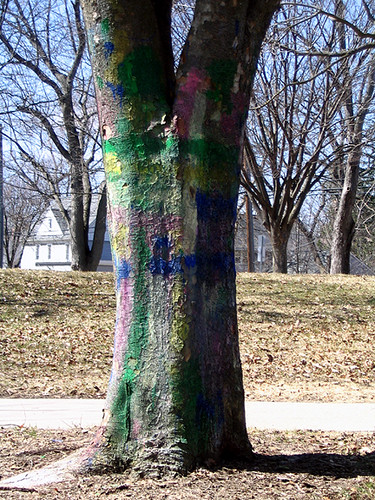
Not so grand were a bunch of tree trunks near the Eberbach Center, which had been adorned in rainbow colors. I couldn't tell if it was chalk or paint, but trees don't need to be painted on—they are beautiful on their own, people!
But I digress. In any case, I decided to in fact visit each of those 157 sites, even those not technically parks. And I'll also add Ann Arbor parks and nature areas that are maintained by groups other than the city, such as the county (County Farm Park, Parker Mill, and Goodrich Preserve), schools (Eberwhite Woods Park), and universities (Matthaei Botanical Gardens and Nichols Arboretum). I may even hit a few township parks near where I live (Lillie Park, Montibeller Memorial Park, etc.). I guess I'll know the final count when I'm done!
A vast majority of the parks are for recreational use; most all have a playground (like the one at Allmendinger shown above) and some also have other amenities such as basketball or tennis courts, soccer fields, and baseball diamonds. A few even have a swimming pool and an ice rink. The playgrounds were very well maintained: They all looked like they had some equipment installed in the last few years and there was very little trash or graffiti. The exception was Arbor Oaks Park, where there was broken glass under an arbor (not directly where kids play). Also, the basketball courts in this park had the most worn surface of any I've seen so far. The irony is, there were many kids using this park, even in early March, while many of the nicer, more updated parks we visited that day were empty.
Playground equipment has changed since I was a kid. Most everything is plastic, not metal, and games are incorporated into play structures. (I was happy to spy a few remaining metal merry-go-rounds and those "rocking horse" animals on springs, integrated into the newer structures.)

Many parks had this kind of game, where you turned rotating disks to make pictures. I just love the kangaroo and especially the cow! Others had different animals, math problems, or tic-tac-toe games. One had many smaller tiles, black on one side and blank on the other, so kids can make their own picture (kind of like two-tone Lite-Brite).
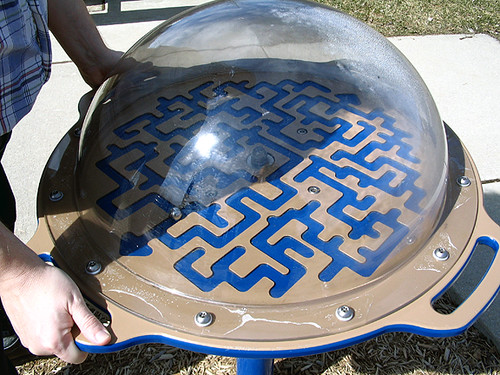
There were "hand mazes" at a lot of playgrounds, with a panel about the size of the one that shows the animals, with a maze design indented into it, where kids presumably use their fingers to trace how to get from one end to the other. In The Ponds Park, however, there was an actual three-dimensional maze with a marble! You had to tilt it to get the marble to roll, as Peter demonstrates.
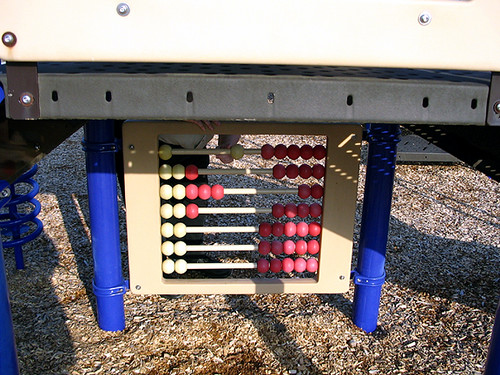
At Turnberry Park, we were both amused to find an abacus, even though neither of us knows how to count on one! (I can plead ignorance as a word person, but Pete is an astronomy instructor with a math minor!)
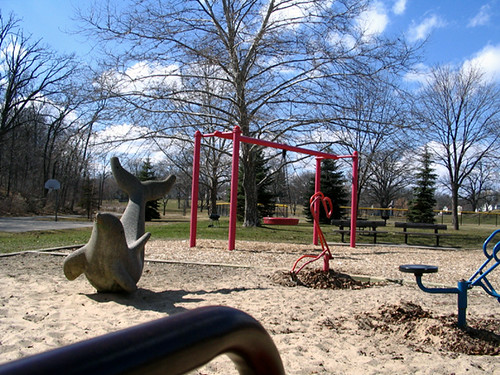
There were also a few animal figures in the parks. I particularly liked this dolphin at West Park (I was sitting on a marry-go-round when taking the shot and the metal bar to the bottom left is supposed to be artsy)...
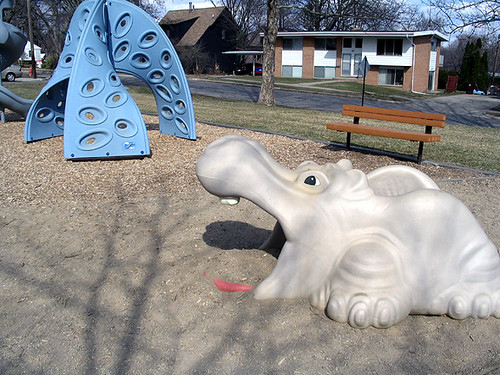
...and this hippo at Virginia Park (check out its tongue buried in sand--priceless!). It reminded me of that Hungry Hungry Hippos game that the kids I used to babysit played.
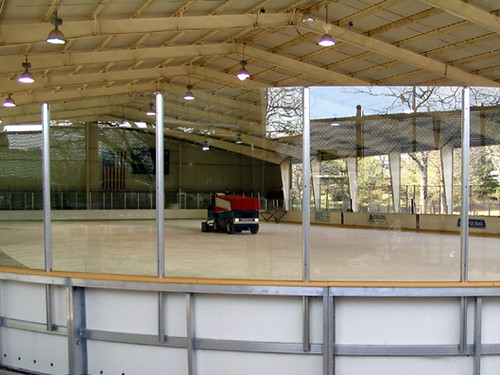
There are other recreational facilities, as well. Buhr Park has an ice rink. I snapped this photo through a chain link fence and even caught the Zamboni in action! Cool! I also like how trees reflect off the Plexiglas.
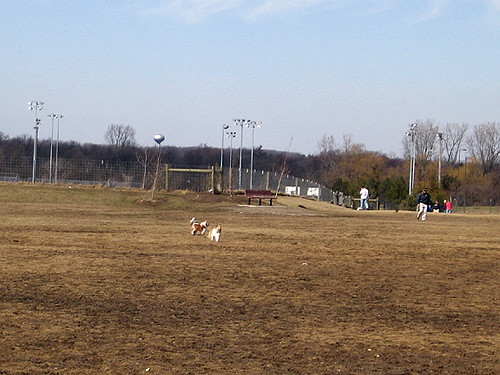
There are even two parks especially for the recreation of our four-legged canine friends. Here is Swift Run, where dogs did in fact run swiftly.
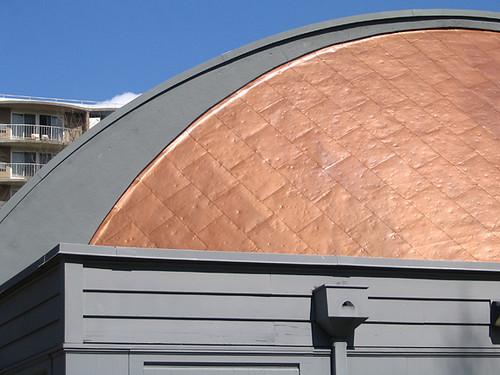
A feature I wasn't expecting, but really should have known about, is a band shell at West Park. Apparently the Ann Arbor Civic Band performs there in the summer, which I'll have to check out. I like this shot of the back of the shell, with its gleaming copper roof.
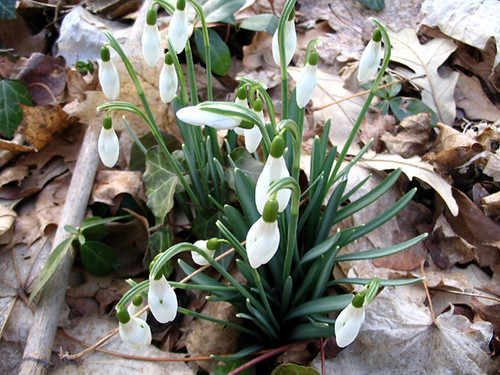
There weren't too many flowers to photograph in any of the parks this time of year, except these cute snow drops at Postmans Rest Park (yes, I'd put an apostrophe in there too, but the city doesn't).
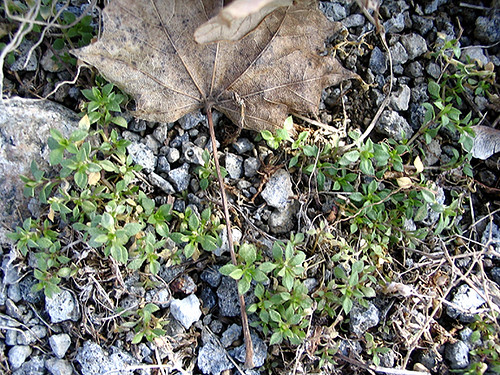
I also found some moss, photographed extremely close up, at Southeast Area park (which is incidentally also the location of my annual
plant swap, this year on May 16).
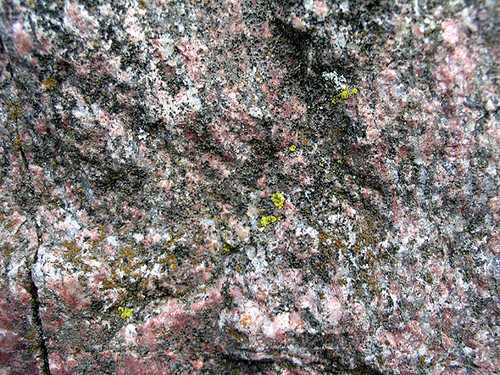
I also like this macro of a rock and some bonus algae (fungus? lichen?) at Winewood Thaler.
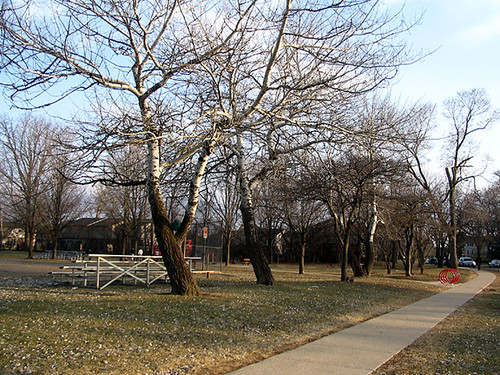
Even though blooms were lacking, there were lots and lots of nice trees. It's especially cool seeing them before they leaf out, because you can really appreciate their form. These are aspens lining the street on the way to Frisinger Park. Note the cool, smooth, somewhat birchy white bark at the top of the tree and standard rougher brown bark below. I'll have to wait for leaves to tell if it's
Populus grandidentata or
P. tremuloides (thanks to Aunita for IDing it!).
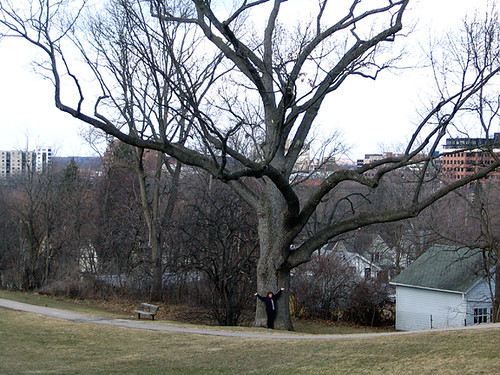
Also, check out this magnificent chinkapin oak (
Quercus muehlenbergii), estimated to be 350 years old, in Wurster Park. Even I don't look so wide in comparison (I'm liking this tree a lot!).
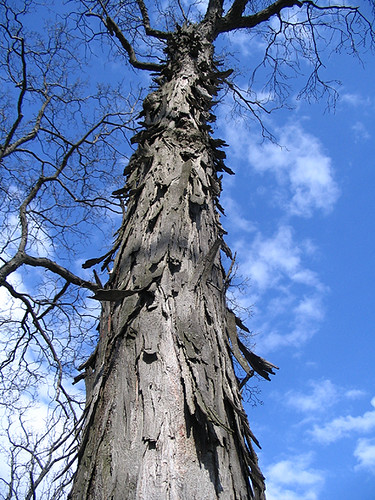
And isn't this shagbark hickory (
Carya ovata) in Allmendinger Park a treat?
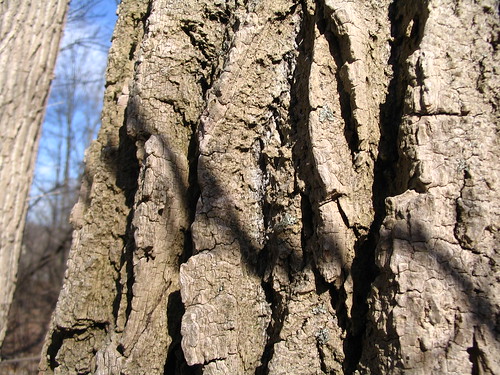
Also check out the fantabulous chunky bark, whose plates form triangular points, of what I think is a red oak (
Quercus rubra), but for which I'm awaiting confirmation. The tree is in Devonshire Park, where we also heard the loud tap tap tapping sounds of a downy woodpecker. I get these in my backyard, but they're mainly eating suet, which doesn't make the same loud echoing sound.

And this winding row of sycamores (
Platanus occidentalis) near Virginia Park is pretty nice, too. I especially like the teeter-totter park sign!

Despite all these wonderful trees, it didn't dawn on me until visiting Allmendinger Park (number 45 on my list), that every other park I'd visited so far had trees on the periphery of the park only, with the playgrounds out in the open. I really like how Allmendinger has trees throughout the park itself. A shaded picnic table or bench is just such a relaxing place!

On the other hand, a few parks are essentially small areas of lawn. The quintessential "corner lot" park was Redwood, which for years consisted of a park sign and lawn on a corner lot in a residential area. When I visited the site, I was surprised to see that a bench, circular sidewalk, an island of trees, and a trash can had been added.

Another park that's a triangle of grass is George Washington, but it also has an enormous rock that college students have painted (over and over and over again) for decades. In fact, I didn't realize the park was called anything other than The Rock. I got this shot of the bottom of the rock, where paint has dripped, over and over again for years and years, so much so that the drips look (and feel) like metal or an extension of the very rock itself.
There are a few other corner-lot type parks, primarily in student areas near the University, and many of them had a bit of litter in them (papers, food wrappers, etc.) I assume they will be cleaned up in spring.

Other parks aren't obvious or easy to access, and are marked ("no improvements") on the city's list. Mill Creek is one such park, which you wouldn't even know is a park if you weren't doing this project! It doesn't have a sign and is essentially a small triangular nature area, heavily populated with invasive buckthorn shrubs. Mallets Creek flows through the middle of the little area, which you can see from two different apartment complexes. The drop-off from the edge of the road (where I took the photo) makes it difficult to enter from that end, and while you can wander in from the other end (the flat area in the photo), it's very dense and difficult to traverse.
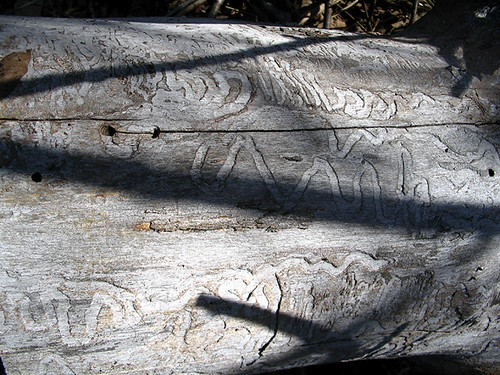
Malletts Creek nature area is another such example. It runs behind an apartment complex and isn't really accessible due to the dense trees and invasive shrubs. I did see a lot of native trees along the perimeter as well, though, plus several dead ash trees that had been cut down, but left on the site. They died due to being invaded by
emerald ash borer (EAB), a shiny green insect that lays its eggs on the ash bark. The larvae tunnel into the inner bark and feed on it, creating the serpentine trails you see in the photo (the outer bark has been removed). The adults chew their way out, leaving D-shaped exit holes. By the time you notice any symptoms (die back of leaves at very top of tree, vertical splits in the bark, and dense sprouting of new shoots around the base of the tree), the beetles have already eaten too much of the tree to save it. There are soil and trunk injections that can save the tree, if administered regularly and
before infection starts. EAB was first discovered in Wayne County (which borders on Washtenaw, my county) in 2002. We have lost pretty much all (over ten million) of our mature ashes in southeastern Michigan, but young ones are still growing as their bark isn't wide enough to provide nourishment for the beetles. EAB has also spread in Illinois, Indiana, Maryland, Ohio, Pennsylvania, and Wisconsin.
Don't move firewood!
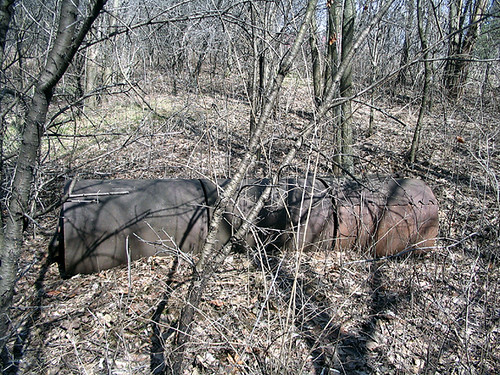
Another example of a wild park is Stone School. Unlike Mill Creek and Malletts Creek parks, it does actually have an obvious entry point and somewhat clear paths. It is also fairly thicketed with buckthorn. Someone had dumped a large roller (the thingamadoey that flattens out lawn, soil, etc.) in this area. It's hard to tell in the photo, but while the metal is slow to decay, some lichens had started growing on the roller. And as a wise friend once said many years ago, "When the works of nature cover over the works of man, isn't that progress?"

One of the most interesting parks was Terhune, which is also the site of a small pioneer cemetery, founded in 1825. At the time, Ann Arbor, which was founded in 1824, had no other cemetery, so Luke Whitmore created the first plot when his daughter Emily died at age 18. The cemetery was renamed Terhune at some point due to one of its more famous occupants, John Terhune, an American Revolutionary War veteran who died in Ann Arbor in 1839.

A few grave stones still remain and the cemetery is maintained by the local branch of the Daughters of the American Revolution (DAR).
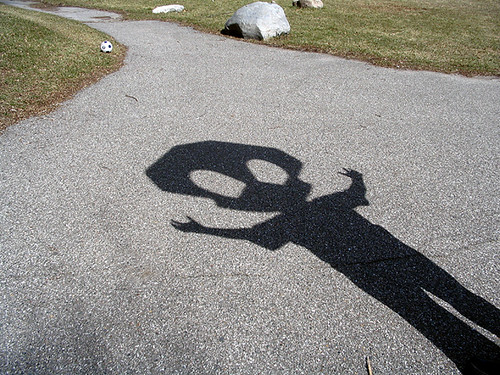
But the most intriguing sight I encountered at all 52 parks visited so far was this alien on the playground at Esch Park. Can you guess what it is?
Added March 27:
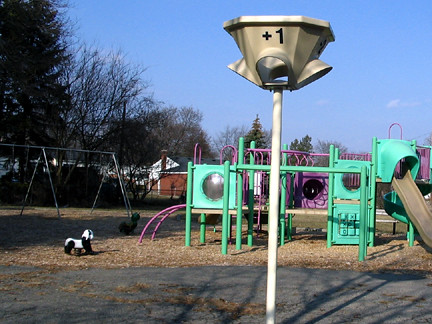
Congratulations to Frances, who braved inclement Blogger conditions resulting in her first comment mysteriously disappearing, to correctly guess that the alien shadow was part Pete and part basketball hoop. Several of the parks had a plastic kind of hoop with three or four holes through which the ball could come out, some with numbers (points), some with colors. (The one pictured isn't the one at the park where the alien photo was taken, but similar.) Congratulations, Frances (though the only prize is smugness)!
I'll post more photos and updates as I visit more parks throughout the year.
 This is the fourth year my friend Pete and I have been participating in our local frog and toad count, and even though we've done various routes to hear as many different species as we could, some of the frogs, such as wood and leopard, had eluded us. Until Sunday night, that is, when we finally heard the wood frog (Rana sylvatica)!!!!! Good gravy, it's cute — I wish we could see them, not just hear them, but not only is the survey done at night, but they like to stay hidden. (Plus, these frogs are small. Woodies are about 2 inches long, and spring peepers and chorus frogs are only about an inch long.)
This is the fourth year my friend Pete and I have been participating in our local frog and toad count, and even though we've done various routes to hear as many different species as we could, some of the frogs, such as wood and leopard, had eluded us. Until Sunday night, that is, when we finally heard the wood frog (Rana sylvatica)!!!!! Good gravy, it's cute — I wish we could see them, not just hear them, but not only is the survey done at night, but they like to stay hidden. (Plus, these frogs are small. Woodies are about 2 inches long, and spring peepers and chorus frogs are only about an inch long.)
